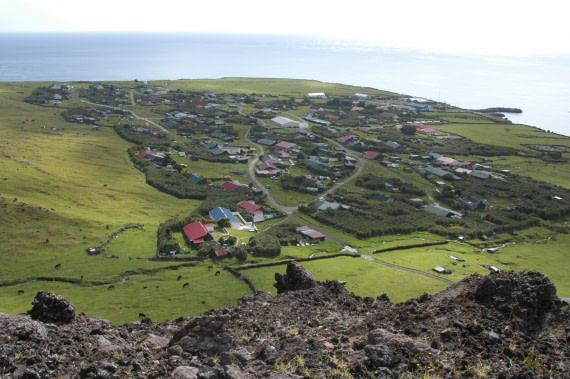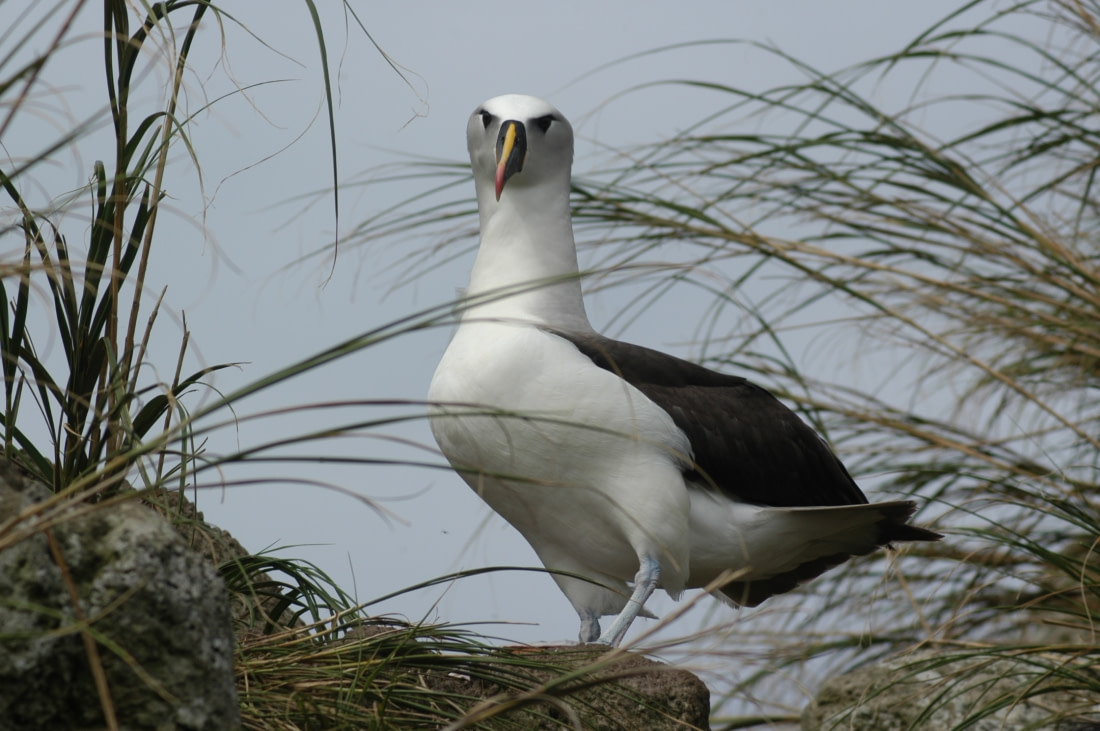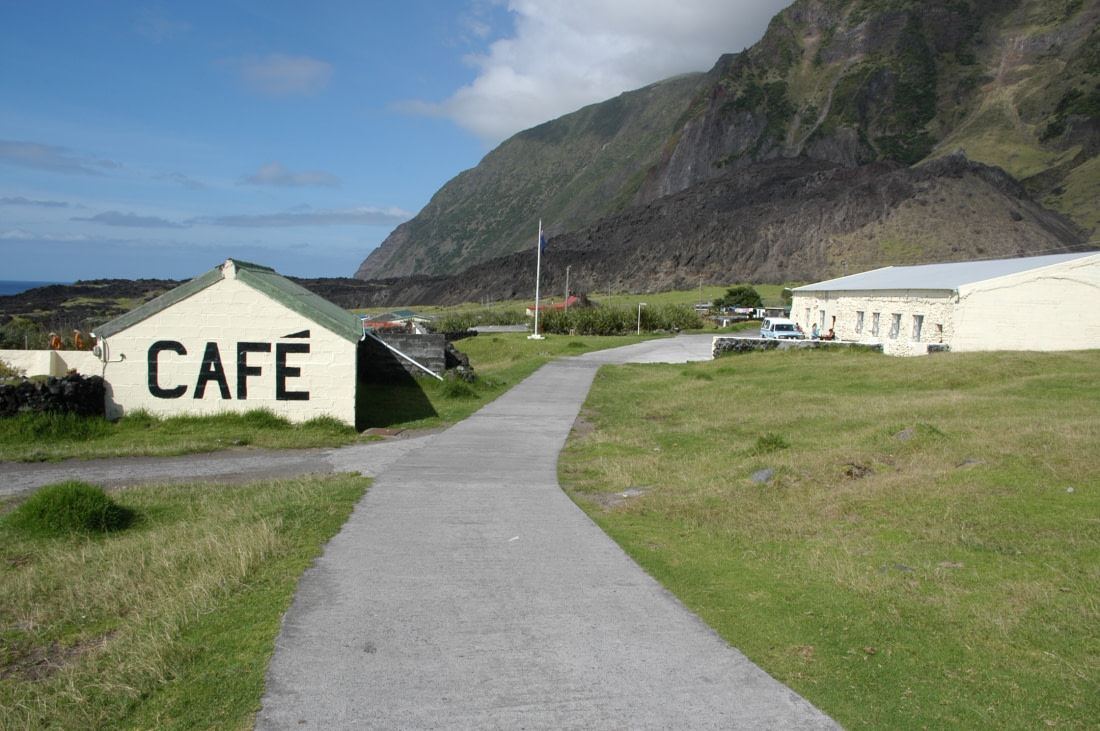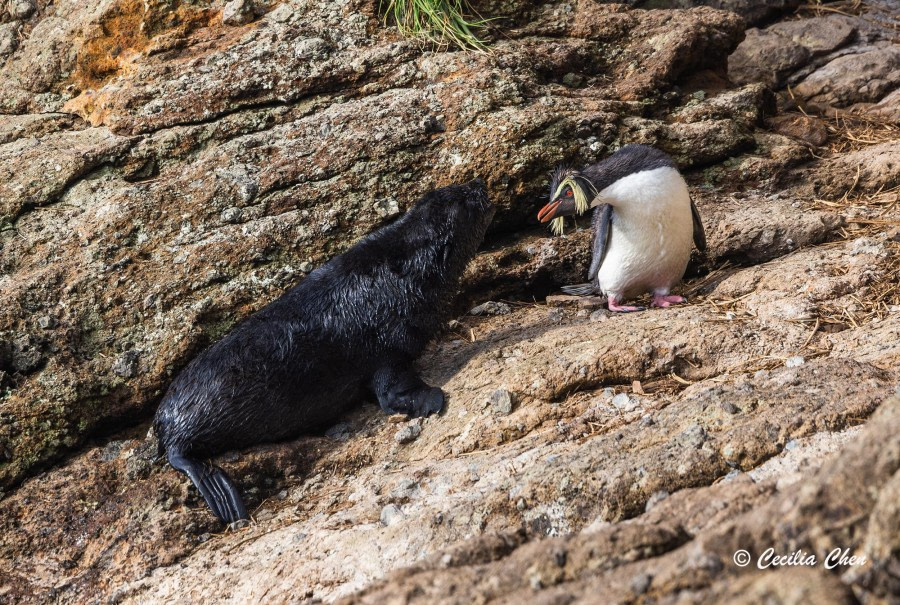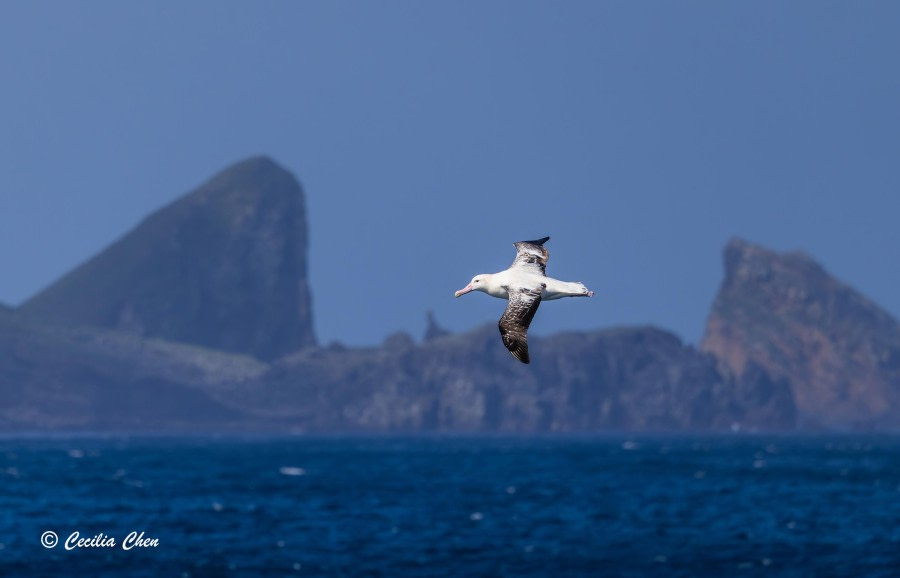Tristán da Cunha es un lugar muy especial, un volcán activo en el que vive gente, situado en medio del océano Atlántico Sur. A menudo se dice que la isla es la habitada más remota del mundo, pero también es famosa por su cultura específica de Tristán, su belleza natural y el gran número de aves marinas que crían en ella.
Cruceros a Tristan da Cunha
Odisea Atlántica, incluyendo la península Antártica hasta Cabo Verde
20 mar. - 2 may., 2028
•Código del viaje: PLA32D28
Nuestra Atlantic Odyssey visita algunas de las islas más remotas del mundo, siguiendo las rutas migratorias de aves como los charranes articos y los skúas de cola larga, mientras ballenas, delfines y peces voladores saltan, se elevan y se deslizan sobre...
Odisea Atlántica, incluyendo la península Antártica hasta Cabo Verde
20 mar. - 4 may., 2026
•Código del viaje: HDS31B26
Nuestra Atlantic Odyssey visita algunas de las islas más remotas del mundo, siguiendo las rutas migratorias de aves como los charranes articos y los skúas de cola larga, mientras ballenas, delfines y peces voladores saltan, se elevan y se deslizan sobre...
Odisea Atlántica incl. Península Antártica a Cabo Verde
26 mar. - 7 may., 2027
•Código del viaje: PLA32D27
Nuestra Odisea Atlántica visita algunas de las islas más remotas del mundo, siguiendo las rutas migratorias de aves como los charranes árticos y los skúas de cola larga, mientras ballenas, delfines y peces voladores saltan, se elevan y se deslizan sobre...
Odisea Atlántica, incluyendo la península Antártica hasta Santa Elena.
20 mar. - 22 abr., 2028
•Código del viaje: PLA32C28
Nuestra Atlantic Odyssey visita algunas de las islas más remotas del mundo, siguiendo las rutas migratorias de aves como los charránes articos y los skúas de cola larga, mientras ballenas, delfines y peces voladores saltan, se elevan y se deslizan sobre...
Odisea Atlántica, incluyendo la península Antártica hasta Santa Elena
20 mar. - 24 abr., 2026
•Código del viaje: HDS31A26
Nuestra Atlantic Odyssey visita algunas de las islas más remotas del mundo, siguiendo las rutas migratorias de aves como los charránes articos y los skúas de cola larga, mientras ballenas, delfines y peces voladores saltan, se elevan y se deslizan sobre...
Último blog e historia de un cliente

Los ocho albatros de la Antártida y el subantártico
Tanto si se dirige a la Antártida, al subantártico o a una combinación de ambos, esta entrada le proporcionará toda la información importante sobre los albatros, así como los mejores lugares para encontrar a estas aves.
Lo más destacado y la vida salvaje

Vea los aspectos más destacados que puede experimentar:

Vea los aspectos más destacados que puede experimentar:
Mapa de Tristán da Cunha
Tristan da Cunha foto fantásticas
Tristan da Cunha Reseñas de cruceros




Tristan da Cunha preguntas frecuentes
¿Cómo es la temperatura en Tristán de Acuña?
Tristán de Acuña tiene una temperatura placentera todo el año. El clima húmedo causa una gran cantidad de lluvia, y es muy poco probable para las áreas por debajo de 500 metros (1.600 pies) que experimente heladas. La temperatura media anual de Tristán de Acuña es de unos suaves 14,8 grados Celsius (58,6 grados Fahrenheit).
El rango de temperatura en enero es típicamente entre 15,4 a 20,4 grados Celsius (59,7 a 68,7 grados Fahrenheit). Durante agosto, se puede esperar un rango de temperatura del 9,7 a la 14.3 grados Celsius (49.3 a 57.6 grados Fahrenheit).
¿Que tipo de vida Silvestre puedo ver en Tristán de Acuña?
Tristán de Acuña se ha ganado la designación de BirdLife International como Área Importante de Aves. Hay dos especies de aves terrestres que permanecen todo el año. Otras 13 especies de aves marinas adicionales anidan en la isla. El Petrel Atlántico ha elegido Tristán de Acuña y la Isla Gough como su unico lugar de anidación en el mundo. También tal vez pueda ver el albatros errante, gaviotines antárticos, pingüinos de penacho amarillo del norte durante su viaje a Tristán de Acuña.
Mamíferos marinos son también frecuentemente vistos alrededor de las islas, especialmente el lobo marino de dos pelos subantártico es una especie a tener en cuenta, ya que no puede ser visto en ningún otro lado. Una de las aves más difíciles de ver en el mundo se encuentran en la Isla Inaccesible: el rasconcillo de Tristán de Acuña. El nombre lo dice todo, no es un lugar fácil de desembarcar.
¿Vive gente en Tristán de Acuña?
A partir del censo de 2015, Tristán de Acuña tiene una población permanente de 268 habitantes. Todos los residentes viven en Edimburgo de los Siete Mares, lo que significa que sólo una pequeña porción de Tristán de Acuña está habitado. Los cruceros a Tristán de Acuña pueden aumentar temporalmente la población de la zona, pero nadie nuevo puede establecerse en la isla sin la aprobación de todos los residentes permanentes.
¿Quienes son los dueños de Tristán de Acuña?
Tristán de Acuña es un territorio de ultramar británico. Fue descubierta por primera vez en 1506, pero no tuvo pobladores hasta 1810. En 1816 Tristán de Acuña fue anexada por el Reino Unido y ha permanecido bajo control británico desde aquel entonces. El lugar tiene su propio sistema político, pero la reina es la autoridad ejecutiva.
¿Cuáles son las características únicas de Tristán de Acuña?
A pesar de la limitada infraestructura y la extensa cantidad de aves marinas, Tristán de Acuña es tal vez más conocida por sus deshabitadas reservas de vida silvestre: la Isla Gough, Inaccesible, y Nightingale, que son las islas más grandes del archipiélago.
En total hay seis islas volcánicas que hacen a la región de Tristán de Acuña. La costa noroeste es la única parte de la isla que no es montañosa. Un enorme y hermoso volcán activo comprende la mayor parte de la isla principal de Tristán de Acuña.
Un viaje a Tristán de Acuña también ha inspirado a muchas mentes creativas, y fue incluida en novelas escritas por Edgar Allan Poe y Julio Verne.
Galería de fotos
Acerca de Tristán da Cunha
El tiempo en Tristán da Cunha
Tristán da Cunha es una remota isla volcánica situada en el océano Atlántico Sur. Durante sus vacaciones en Tristán da Cunha disfrutará de temperaturas suaves durante todo el año, con unos 15 °C en los meses de invierno locales (de junio a noviembre) y unos 20 °C en verano. No olvide traer su chubasquero, ya que en las islas no hay una estación seca propiamente dicha.

Datos sobre Tristán da Cunha
- Tristán da Cunha forma parte de los mismos territorios británicos de ultramar que Santa Elena y la isla Ascensión.
- Tristán da Cunha es el grupo de islas habitadas más remoto de la Tierra.
- Las islas fueron descubiertas por el marinero portugués Tristão da Cunha en 1506.
- La capital de Tristán da Cunha es Edimburgo de los Siete Mares.
- El Servicio Postal Real Británico tuvo que asignar un código postal a Tristán da Cunha en 2005 porque gran parte de su correo se enviaba a Edimburgo, en Escocia.
- Alrededor de 275 personas conforman la población permanente de la isla principal de Tristán da Cunha. Entre ellos solo comparten 8 apellidos familiares.
- Otras islas del grupo se llaman Gough, Nightingale e Inaccessible. Esta última es el hogar del rascón, una de las aves más difíciles de ver en el mundo.
Viaje a Tristán da Cunha
Tristán da Cunha es a menudo considerada la isla habitada más remota del mundo, pero también es famosa por su cultura específica, su belleza natural y la gran cantidad de aves marinas que se reproducen allí. Un crucero por Tristán da Cunha le llevará a un paraíso para los observadores de aves. Las cuatro islas que componen el archipiélago son el lugar de cría de los pingüinos saltarrocas del norte, millones de aves marinas, entre las que se incluyen el albatros errante de Tristán, el albatros de pico amarillo del Atlántico, el petrel del Atlántico, la polluela de Gough y el rascón no volador de la isla Inaccesible.
Su expedición a Tristán da Cunha le permitirá disfrutar de las aguas circundantes, que albergan focas subantárticas, elefantes marinos y una gran variedad de ballenas.




















